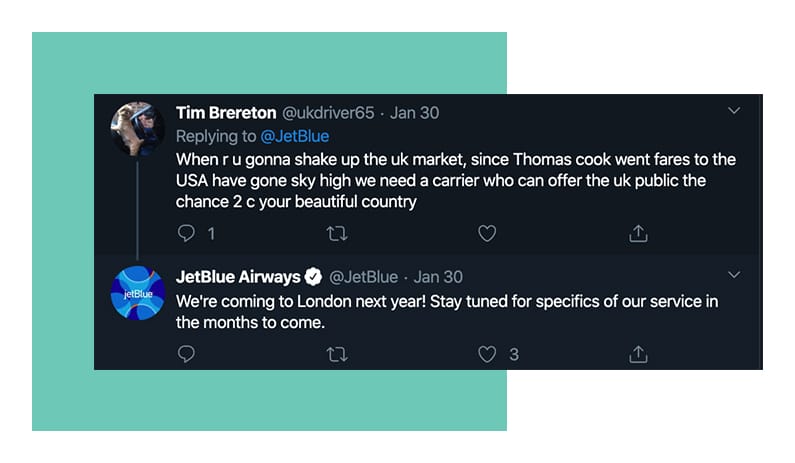Emphasize positive messaging for increased conversions.
Let’s face it: not everybody is a positive person. And that’s okay, but you absolutely want positivity in your marketing copy. Why? Because positivity increases sales and encourages interaction with your brand.
So while you don’t have to be as positive as a rotund yellow bear with a craving for honey, positivity in your copy is a must. But not everybody knows exactly how to go about putting a positive spin on their marketing copy.
After all, an air of positivity is easier to achieve in some industries than others. Any trip to your local DMV is an example of that. Suffice it to say that the general attitude of the people there and those employed by the DMV may not always be “chipper.”
Annette Simmons, author of Whoever Tells the Best Story Wins, says that when employers force their employees to be friendly, they strain the quality of story produced.
Simmons uses the example of a grocery store clerk to flesh this concept out:
A casualty of overdoing clarity is the mindless attempt to force good intentions onto grocery store clerks with scripts for greeting customers. Increased clarity in this case actually degrades customer relations. When I reach the register in the supermarket line I feel sorry for the guy or girl who is forced to ask me “Did you find everything you need?”
So it’s clear from this passage that although Simmons is talking about forced positivity in customer communications, it bears out similar situations in copywriting, and more broadly, marketing.
I’m thinking of Chipotle here, where positivity is cared for to such an extent as to overshadow the main draw of the company. See, at Chipotle, the staff is supposed to “act happy.” They’re supposed to always smile at customers. While this is the usual grind at customer service jobs in the B2C market, this practice breeds withheld resentment.
More specifically, in terms of forced positivity in marketing copy, fake reviews are a good example. For instance, US Coachways received a hefty fine for giving themselves positive reviews.
Actionable Tips to Add Positivity
It can be hard to be positive when literally everything around you seems to be negative. Just flip on the TV and wait for some commercials. But it’s not your fault if all you’re noticing is negative ads.
We’re wired to prioritize negative information over positive.
For example, if you had a bad experience with water when you were growing up, the negativity bias may show up in the form of avoiding swimming.
And so it is with brands. Bad brand experiences lead to customer avoidance.
So to overcome this bias, you have to hone in on a positive message in your copy. A few suggestions to do this include:
- Naturally training your brain.
A lot of your thoughts and feelings are the result of unconscious processes that you have no control over. For example, have you ever had a negative thought that kept repeating itself? You’re going to mess up. You’re going to mess up. You’re going to mess up.
That’s because your brain is conditioned to have that response. But on the flip side, no one’s stopping you from conditioning your brain in a positive way. For example, instead of thinking, “How am I going to solve this problem?” think, “What can I learn about it? What can I teach my client?”
- Healthy body, healthy mind=positive copy.
No, I’m not telling you to go hit a gym, although there is a relationship between mind and body. If you want to achieve positivity in whichever way works for you, try adopting positive physical behaviors, such as standing up straight and broadening your stance. Aim for an even weight distribution.
This can help you out big time as a marketer because the whole name of the game is customer service–that means interacting with your customers. There are many ways you directly and indirectly interact with your customer ranging from client meetings to the copy they read on your website.
- Add value for a client
Given that there is a relationship between listening and positive emotions, listening to your clients’ problems will add value to your relationship. Here, there is a difference between listening and hearing. If you heard your client’s problems and you suggest a solution out of line with the problem at hand, you only heard the problem.
If you listened, your advice would have been effective. If not, though, at least it wouldn’t have been out of line.
Human beings are creatures of habit, though—you learn and remember through repetition, as I mentioned earlier.
A quick way you can bring positivity to your marketing communications is to practice the Love-Based Copywriting Method.
Listen Up, Avoid Negative Language
Love-Based Copywriting Method is a book that introduced a movement started by author, Michele Pariza-Wacek. She noticed that marketers are traditionally taught to zero-in on prospects’ and customers’ pain points and ride those out for all they’re worth.
Pariza-Wacek writes, “It’s one thing to remind people of their pain so they can decide if they’re either ready to find a solution for the pain or if they’re not ready to move forward quite yet… But [to do it at the point of] suffering is another story.”
In Love-Based Copywriting Method, you emphasize the positive. You actively choose positive messaging over negative. So how exactly do you do it?
- Utilize comparative advertising. Here, you get the best of both worlds. You don’t say anything negative about your competitors, but you get all the benefits of positive copy.
For example, car brand, Plymouth, aired ads that featured the slogan, “Look at all three, before you make a decision.” The “three” the ad referred to were the other major car makers at the time. The statement was innocent, but under the hood, it was about the competition.
Why would a customer want to look at all three? What was wrong with the first one or two? These were the questions Plymouth wanted customers to ask themselves.
- If you have to use negative language, buffer it with positive words. This can be seen in the social media responses you give to unhappy customers.
The key is what’s known in creative writing circles as the compliment sandwich–starting with a positive comment, giving a negative one, topping off with another positive.
In marketing, for example, this would look like JetBlue Airways’ handling of social media. All of their responses are appropriate and positive.
Source: Twitter
In this sample taken from JetBlue Airways’ Twitter, we see a user complaining that JetBlue hasn’t made an impact on the UK market. JetBlue responded by:
-
- Acknowledging the comment positively, (We’re coming to London next year!)
- Treating the negative (Stay tuned…)
- Reaffirming positivity by giving an expected timeframe. (the months to come)
- Eliminate jargon and marketing buzzwords–jargon often has negative connotations as a waste of time and meaningless, especially in an international context. Words and phrases common to one place do not translate everywhere.
For example, when KFC expanded into China in the 1980s, its signature slogan didn’t do so well. Why would you want to eat at a place where customers are invited to “Eat your fingers off”?
Idioms are a form of cultural jargon, which is important for global brands to understand.
There is an abundance of self-help websites that can offer you tips on how to bring positivity to your copy. But a more unconventional way to achieve this is to read a book related to your client(s) industry or market.
It’s what copywriting all-star, Joseph Sugarman, would do. See, he was big into the intersection of copy and life experience. And in Sugarman’s ode to copywriting, The AdWeek Copywriting Handbook, there are general principles that can help marketers do their job better.
One such principle is,
“There is a saying that goes, ‘If all you have is a hammer, you look at every problem as a nail.’ The more tools you have to work on a problem in the form of experiences or knowledge, the more new ways you can figure out how to solve it.”
What he means is that reading and just living your life can give you those unique experiences that help you solve problems. For example, if you had a client that wasn’t catching on their vertical, you can read up on the specifics of their problem, and suggest a solution based on what’s worked in the past.
That’s what Sugarman did with an ad about a digital watch that sold in the millions. The process Sugarman went through creating this ad is similar to the above example.
Looking for more advise from the best copywriters? This article provides summaries of the best copywriting books.
Adding positivity to your copy is hard.
It’s a balancing act between sounding authentic, but not sounding overeager–or worse, fake. Either way, it literally pays to be positive (without forcing it). Whether that be Plymouth’s comparative advertising, JetBlue’s success (social media obviously contributes to that), or what can be learned from KFC’s move to China, you can take positivity to the bank.
Do you have any unique strategies that help keep your copy positive? Leave us a message in chat below to tell us.
Marketing Agency
MESH is a digital marketing agency that has pioneered Account-Based Marketing via our proprietary Outcome Driven Marketing (ODM) methodology. We keep our focus on tightly integrating (or MESHing) lead generation, inbound, and outbound methodologies. We help you understand the hidden levers that impact your customers’ buying decision process, develop the right marketing strategy for your unique business case, and effectively execute and measure all aspects of your Account-Based Marketing program.







